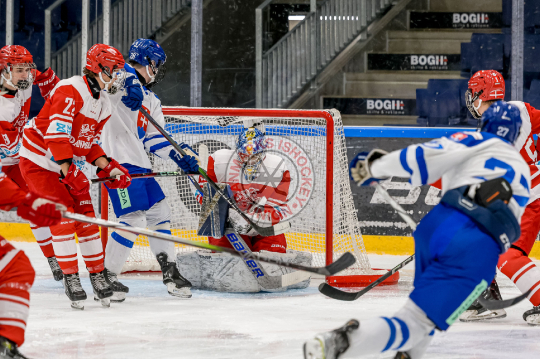The 5,000 cubic metres of radioactive waste currently located at the Risø Sustainable Energy Lab, near Roskilde found its way back into the spotlight this week after six mayors and several protest groups demonstrated against their lack of say in what should finally become of a problem that has plagued officials for ten years.
The mayors of six councils – Roskilde, Skive, Bornholm, Lolland, Struer and Kerteminde – say that the heath minister, Astrid Krag (Socialistisk Folkeparti), needs to be more open and accommodating.
“We have experienced a great deal of opaqueness surrounding this issue and we have been battling to be a part of the decision,” Sonja Rasmussen (Borgerlisten), the mayor of Kerteminde, told DR Nyheder. “But we still feel left out and there needs to be more transparency in this, or else it’s not democratic.”
The atomic waste stems from three closed test reactors that operated at Risø until 2001. Parliament decided back in 2003 that it should be moved elsewhere, a process that has been more than difficult.
The councils of Skive, Bornholm, Lolland, Struer and Kerteminde have been identified as being suitable places to send the waste, much to the consternation of the councils’ mayors and citizens.
The mayor of Skive, Flemming Eskildsen (Venstre), argued that the whole situation has been handled poorly ever since the five councils were informed that they had been chosen as possible waste destinations in May 2011.
“We feel like we’ve been robbed in the middle of the night. We were informed via a phone call and have not received any more information since then, despite the establishment of a focus group,” Eskildsen said. “We want to sit at the table and be a part of the process.”
The mayors and the local support groups hope that they can get Krag and the other politicians in parliament to listen to their criticisms by standing together. But despite their attempts at solidarity, they don’t agree on where the waste should be placed.
“We don’t have any answer. We are councils that have been pointed out without our knowledge. We don’t want to leave anyone else in the lurch, but we want the decision to me made properly so that everyone will respect the final decision,” Eskildsen said.
Sources within the Health Ministry told The Copenhagen Post that the councils have been involved in the process since the issue surfaced ten years ago.
More recently, the ministry said that they had offered the five councils the ability participate in public meetings and that the national geological surveyor GEUS, Danish Decommissioning (DD) and the National Institute of Radiation Protection (NIRP), which have been commissioned by parliament to find a suitable storage depot for the waste, have been in contact with all five councils and have attended meeting in which the mayors could ask questions.

In their search for a final destination for the waste, parliament has asked GEUS, DD and NIRP to find a suitable storage solution and location for the waste. Ole Kastbjerg Nielsen, the head of DD, said that the process was well underway.
“We are preparing a decision proposal for parliament and are currently looking into safety and other aspects in regards to an intermediate depository,” Nielsen told The Copenhagen Post. “An intermediate repository, a plan that the Netherlands has also turned to, would be a temporary solution and they would have to find a final and permanent solution after 100 years at the latest.”
Nielsen said that they should have found a solution by the end of this year or early 2014. In regards to the mayors being left in the dark, Nielsen said that the responsibility rests within the ministry to inform the public and the mayors about the situation.












